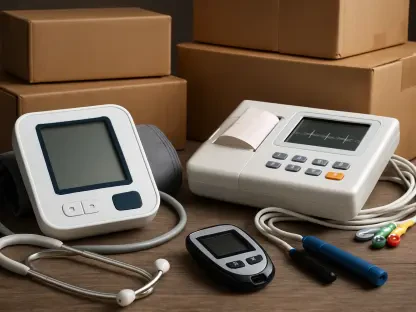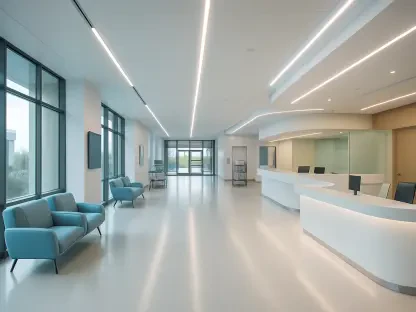The COVID-19 pandemic catalyzed a worldwide shift in many sectors, including healthcare, where telemedicine emerged as a crucial tool. Initially seen as a stopgap solution, telemedicine has now become an integral part of patient care, offering an unprecedented level of accessibility. This transformation was not only beneficial to patients but also contributed to enhanced physician satisfaction. A study published in the International Journal of Medical Informatics shed light on the multifaceted effects of telemedicine, exploring data from the 2021 National Electronic Health Records Survey and gathering insights from 1,875 doctors.
Enhanced Patient Access and Care Quality
Diverse Telemedicine Modalities
The study investigated various telemedicine modalities, including telephone consultations, videoconferences, non-integrated platforms like Doxy.me, and integrated systems that synchronize with electronic health records during appointments. Each modality offered unique advantages, but all contributed to expanding healthcare access. Telephone consultations, for instance, saw the highest number of patient visits. The ease and familiarity associated with telephonic conversations made it a popular choice among patients, especially those less tech-savvy or lacking access to high-speed internet. This modality eliminated geographical barriers, enabling patients in rural or underserved areas to consult specialists without needing to travel.
Conversely, videoconferencing and integrated systems provided a more immersive and interactive experience. These platforms allowed doctors to observe non-verbal cues and perform visual assessments, approximating the in-person consultation experience closely. The integration with electronic health records ensured that all patient data was up-to-date and accessible, significantly enhancing the efficiency and coherence of patient care. Between the various choices, patients and healthcare providers could select the modality best suited to their needs and circumstances.
Barriers to Telemedicine
Despite its widespread adoption, telemedicine is not without challenges. One of the most significant barriers identified by the study was internet speed. Inadequate or unreliable internet connectivity can disrupt consultations, reduce the quality of care, and lead to patient and physician frustration. Similarly, the ease of use of telemedicine platforms also plays a critical role. Complex interfaces or requiring multiple steps to set up a consultation can deter both patients and healthcare providers from using these systems.
Other notable barriers included the mismatch between certain medical specialties and telemedicine capabilities. Some specialties require hands-on examinations or intricate procedures that are not feasible via telehealth. Additionally, varying levels of patient tech proficiency also influenced the effectiveness of telemedicine. Older patients or those less familiar with technology might struggle with using telehealth services, ultimately impacting their experience and care quality. Lastly, reimbursement issues posed a significant challenge, with inconsistencies in policy and compensation rates affecting both physician adoption and satisfaction.
Physician Satisfaction and Telemedicine
Positive Outcomes and Satisfaction Rates
The study unequivocally demonstrated that telemedicine positively affected physician satisfaction. One of the key findings was that 65% of doctors reported being pleased with the rapport established with patients via telemedicine. The initial skepticism about virtual consultations, deeply rooted in the traditional, face-to-face-centric culture of U.S. healthcare, is steadily declining. Physicians are discovering that high-quality audio and video capabilities can significantly enhance their interactions with patients, making virtual consultations almost as effective as in-person visits. Good quality telehealth sessions contribute to physicians feeling more connected with their patients, fostering a robust doctor-patient relationship.
Furthermore, telemedicine has streamlined workflows for many doctors. The elimination of commute times between multiple healthcare settings, reduced waiting times, and more efficient management of appointment schedules have combined to make telehealth an attractive option for healthcare providers. These operational efficiencies not only contribute to higher physician satisfaction but also potentially reduce burnout, a significant concern in the medical profession.
Overcoming Initial Reservations
Another interesting aspect of the study is how it reflects the ongoing shift in attitudes toward telehealth within the medical community. Initially met with resistance, telemedicine is gaining broader acceptance as its benefits become more apparent. Physicians who previously doubted the efficacy of virtual consultations are now embracing telemedicine platforms, driven by positive patient outcomes and improved satisfaction rates. This shift is also supported by ongoing technological advancements that address earlier shortcomings such as poor video quality or complex user interfaces.
Additionally, the growing body of evidence supporting telemedicine’s effectiveness is playing a crucial role in changing perceptions. As more studies highlight its advantages in terms of accessibility, quality of care, and operational efficiencies, healthcare providers are increasingly willing to adopt and integrate telemedicine into their practices. Overcoming initial reservations and barriers is essential for telemedicine to continue flourishing and delivering on its promise of revolutionizing patient care.
The Road Ahead
Addressing Technical and Operational Challenges
The future success of telemedicine depends largely on addressing the technical and operational challenges identified by the study. Improving internet infrastructure is paramount. Ensuring that both urban and rural areas have access to reliable, high-speed internet is critical to the sustained adoption and efficacy of telemedicine. Moreover, telemedicine platforms must continually evolve to become more user-friendly. Simplified interfaces and intuitive design can make a significant difference in user adoption rates, ensuring that both patients and healthcare providers can use these platforms efficiently.
Further investments are needed in training for both patients and providers. Educating patients about how to use telemedicine services can enhance their experience and improve the quality of care. Similarly, providing training for healthcare providers can help them better leverage these tools, ultimately contributing to higher satisfaction rates. Addressing reimbursement issues through more consistent policies and compensation rates is also crucial to encouraging broader adoption among physicians.
Long-term Viability and Integration
The COVID-19 pandemic sparked a global shift in numerous sectors, notably healthcare, where telemedicine emerged as a game-changer. Once viewed as a temporary fix, telemedicine has now entrenched itself as an essential aspect of patient care, significantly enhancing accessibility. This evolution has proven beneficial not only for patients but also for physicians, leading to higher levels of job satisfaction among healthcare providers. A study featured in the International Journal of Medical Informatics highlighted the diverse impacts of telemedicine. This study, which analyzed data from the 2021 National Electronic Health Records Survey and included insights from 1,875 doctors, underscored the multifaceted advantages of telemedicine. Enhanced patient engagement, reduced travel time, and the potential for more flexible scheduling were among the positive changes reported. As telemedicine continues to evolve, it promises to further revolutionize the healthcare landscape, making quality medical care more attainable for people around the world.









